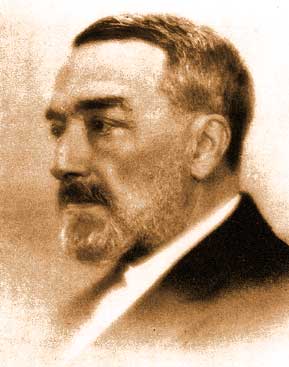Salomon Reinach facts for kids
Salomon Reinach (born August 29, 1858 – died November 4, 1932) was a French archaeologist and historian of religions. He was an important person in the Jewish community in France during the late 1800s and early 1900s. He was a leader in major Jewish organizations, like the Alliance Israelite Universelle and the Jewish Colonization Association.
About His Life
Salomon Reinach was born in St Germain-en-Laye. He had two brothers, Joseph Reinach and Théodore Reinach. He studied at a famous school called the École normale supérieure. After that, he joined the French school in Athens in 1879.
He made important discoveries in archaeology. He found ancient sites in places like Myrina (near Smyrna) from 1880 to 1882. He also explored Cyme in 1881, and Thasos, Imbros, and Lesbos in 1882. Later, he worked in Carthage and Meninx (1883–1884), and Odessa (1893). Many important groups in Europe recognized his work.
In 1887, he started working at the National Museum of Antiquities in Saint-Germain-en-Laye. He became an assistant curator in 1893 and then the main curator of national museums in 1902. In 1903, he became an editor for the "Revue archéologique", a magazine about archaeology. That same year, he received a high honor called the Legion of Honour.
He also gave lectures about art at the École du Louvre in 1902-1903. These lectures were later published as a book called "Apollo: histoire générale des arts plastiques". This book was translated into many languages and became a very important guide for studying art history.
His Ideas on Myths and History
Salomon Reinach was known for his ideas about how some ancient stories and myths developed. He believed it was hard to find clear historical proof for some figures, even if they might have existed. He once said that we cannot be sure about the exact history of some figures, but that doesn't mean they didn't exist.
Reinach also studied how some religious stories might have been influenced by older, non-religious legends. He supported other scholars, like William Benjamin Smith, who also looked at the historical evidence behind religious stories.
Another writer, Joseph McCabe, said that Reinach was a leading expert in France on the study of religion. McCabe noted that Reinach focused on the historical and factual parts of religion, rather than supernatural ideas.
His Death
Salomon Reinach passed away in 1932. He was buried in the Cimetière de Montmartre in Paris.
Books He Wrote
- Manuel de philologie classique (1880-1884)
- Chronique d'Orient Fouilles et Découvertes a Chypre Depuis l'Occupation Anglaise (1885)
- Grammaire latine (1886)
- La Nécropole de Myrina (1887)
- L'Arc de Titus et les Dépouilles du Temple de Jérusalem (1890)
- Répertoire de la Statuaire Grecque et Romaine (3 volumes, 1897–98)
- Répertoire des Vases Peints Grecs et Étrusques (1900)
- The Story of Art Throughout the Ages (1904)
- Répertoire de Peintures du Moyen Âge et de la Renaissance (1905)
- Apollo: an Illustrated Manual of the History of Art Throughout the Ages (1907)
- The so-called Asiatic Terracotta Groups (1907)
- Orpheus: A General History of Religions (1909)
- Cults, Myths and Religions (1912)
- A Short History of Christianity (1922)
See also
 In Spanish: Salomón Reinach para niños
In Spanish: Salomón Reinach para niños


